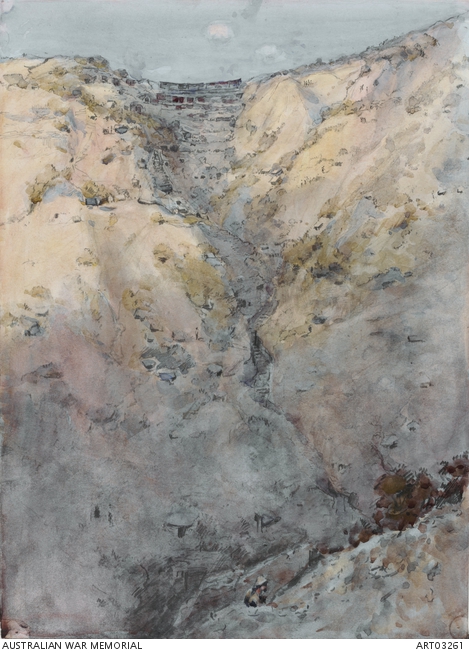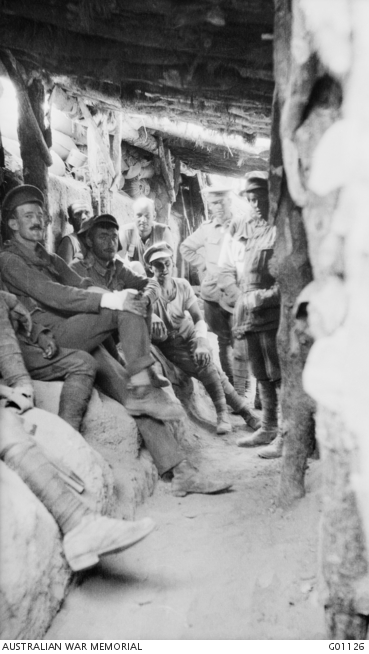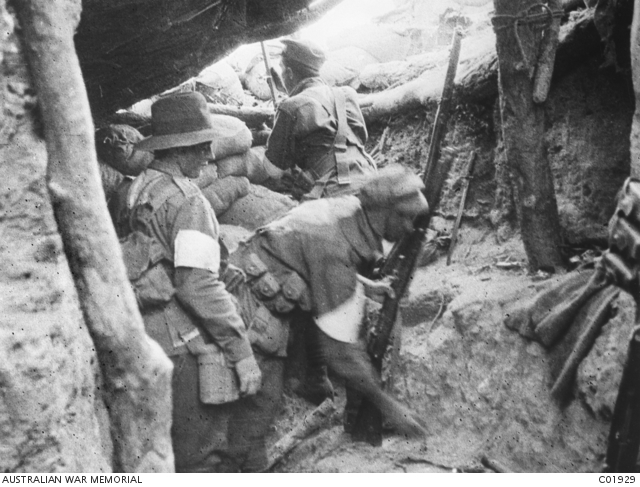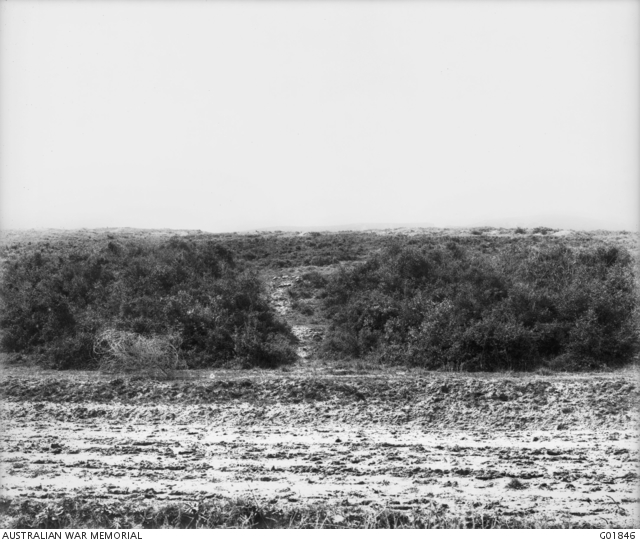Australia's Gallipoli Victoria Crosses
For ninety four years the story of Gallipoli has galvanised Australians to remember, on ANZAC Day, those that have served, and continue to serve, in conflicts around the globe. The description by poet John Masefield in 1917 of the landing on Gallipoli creates an indelible backdrop to the fighting:
Those who wish to imagine the scene must think of any rough and steep coast known to them, picturing it as roadless, waterless, much broken with gullies, covered with scrub, sandy, loose, difficult to walk upon, and without more than two miles of accessible landing throughout its length...Then let them imagine the hills entrenched, the landing mined, the beaches tangled with barbed wire, ranged by Howitzers, and swept by machine guns...
(See rare movie footage of Anzac and Suvla here)
The landing was just the beginning. Later, Australians fighting at Courtney's Post, Lone Pine and Hill 60 would become immortalised by the awarding of the Victoria Cross. The Victoria Cross symbolises signal acts of valour "that neither rank, nor long service, nor wounds nor any other circumstance or condition whatsoever, save the merit of conspicuous bravery shall be held to establish a sufficient claim to the honor [sic]." (extract from original warrant 29 January 1856)
The stories behind the nine Victoria Crosses won by Australian soldiers on the little known peninsula almost a century ago, all of which are held and displayed in the Memorial's Hall of Valour, helped in the creation of the ANZAC legend:
Courtney's Post 19 May 1915:
Private Albert Jacka, who killed seven of the enemy at Courtney's Post when he was the only man left standing to defend his position. He was the first Australian to be awarded a VC in the First World War. Later, Jacka was awarded the Military Cross and Bar while serving in France.
Lone Pine 6-9 August 1915:
Captain Alfred Shout , a Boer War veteran, who for hours engaged the enemy in close combat before being mortally wounded.
Private Leonard Keysor, who fought a pitched battle for a mammoth 50 hours during ‘days and nights of slaughter...of men struggling through dark tunnels toward the enemy.' In 1927, he re-enacted his actions for a silent movie only to be wounded again when a simulated trench prop exploded in his face.
Lieutenant William Symons who was sent to recapture a trench when his own commanding officer expected him to die in the attempt.
Private John Hamilton, who remained in the open, sniping and directing bomb throwers for six hours in the face of intense fire. Hamilton went on to serve in the Second World War.
Lieutenant Frederick Tubb and Corporal William Dunstan who refused to cede their position, even though wounded and under heavy bomb attack, and Corporal Alexander Burton who was killed in the same action.
Hill 60 21-29 August 1915:
2nd Lieutenant Hugo Throssell, already a survivor of the suicidal charge at The Nek, his body peppered with bomb fragments and torn by bullets, who kept fighting and inspiring his men throughout a night of determined enemy counter-attacks at Hill 60. He remains the only member of the Light Horse to have been awarded a VC.
The Memorial also holds some unusual Gallipoli VC related items:
The handcrafted timber ‘VC Table', a gift from First World War VC recipients to ‘Huge Deal' McIntosh, an ambitious politician, boxing promoter, newspaper executive, milk bar entrepreneur and theatrical producer.
McIntosh was also responsible for the solid gold Tivoli lifetime pass medallions, two of which are in the Memorial's collection. The passes are crafted in the form of a VC and were presented to Australian VC recipients by the then Minister for Defence Senator Pearce or State Commandant Brigadier General Brand with all the pomp and ceremony of an actual investiture.
A more poignant reminder of the fighting at Gallipoli is the direct descendant of the Lone Pine from Gallipoli growing in the Memorial's grounds. A plaque at the base of the tree records the tragic circumstances of its origins. The Pinus halepensis (Aleppo Pine) was planted by His Royal Highness Henry Duke of Gloucester in 1934.
At the conclusion of the ceremony the Duke laid a wreath of scarlet poppies produced by the Haig Fund, a charity set up by Field Marshall Douglas Haig to assist returned soldiers. The pine was already well established by the time of the opening of the Memorial on 11 November 1941.
After 94 years, Gallipoli still evokes a sense of reflection and commemoration thanks, in no small part, to the stories behind Australia's nine Victoria Crosses.








